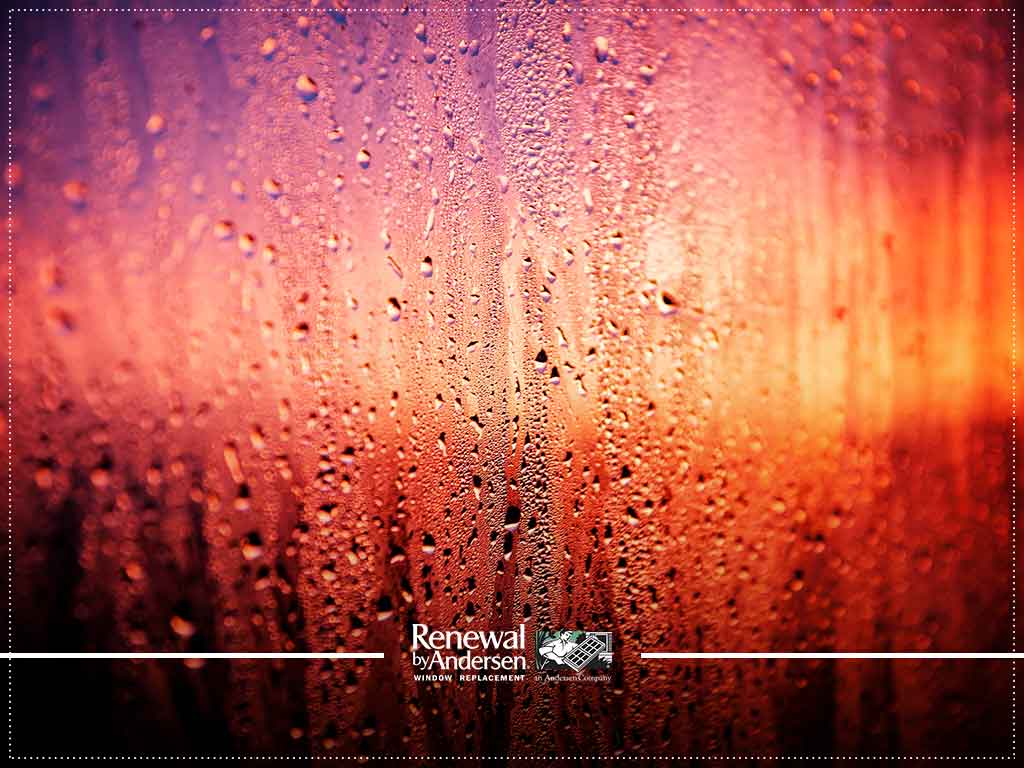

Condensation refers to water vapor turning into liquid water as it comes into contact with a surface. Common examples of this natural occurrence include dew forming on the grass in the early morning, eyeglasses fogging up when you enter a warm building on a cold day or water droplets forming on the surface of a drinking glass during a hot day.
The same thing happens to your windows, especially in the winter. Not all people, however, are aware that it can also happen during the summertime. In fact, window condensation in these two time periods differs in a lot of ways. Renewal by Andersen® of Nashville, your local window company, sheds light on it in more detail.
Homeowners show the most concern for their windows when the outdoor temperature drops during the autumn and winter months. Condensation quickly occurs, forming because of warm, moist air coming into contact with cold windows, frames, and walls. A key thing to remember here is that during these months, that fogging you see in the window glass appears on the windows’ interior.
It is a result of our need to turn the heat up just so we can feel comfortable. Having your HVAC system generate heat indoors helps create a higher humidity level, making the air warmer than the extremely cold temperatures outside. That’s why our double hung windows become foggy with condensation.
In the summer, the situation changes. Outdoor temperatures rise up and become humid while the indoor air is kept relatively cool. Condensation still occurs as a result, but the fogging in the glass appears on the window’s exterior.
This problem, however, is mostly visual. Outside window and building surfaces often get wet from rain, which means that additional water on the exterior glass surface won’t be much of a concern. Once the temperature outside rises, the condensation will slowly disappear from view.
Condensation is often considered as something that is detrimental to the overall comfort and energy efficiency of the home. Fogging on the glass may look unsightly, but, when it comes to functionality, it is nothing of concern. It only means your energy-efficient windows are working just as they should be. That is if you have such units installed in your home.
Inefficient windows, apart from their poor performance, may not show signs of condensation. The lack of tight seals allows air from the outside to find its way inside the home. Even a tiny amount of it is enough to raise or lower the temperature of your home, affecting comfort and energy consumption.
Consider having replacement windows installed to get rid of your existing units that don’t manifest condensation. When you have single-pane units, switch to those with double glazing. They have the necessary components to keep your home comfortable despite differences in the indoor and outdoor temperatures.
Thanks to the low emissivity (low-E) glass coating of energy-efficient windows, the heat remains outside your home during the summer and inside during the winter. Once the sun goes down, the same glass coating will begin to cool from the outside. This minimizes heat transfer from the inside, allowing the outside exterior surface to cool down below the outdoor temperatures.
Another noteworthy component of energy-efficient replacement windows is the space between the two glass panes filled with an inert gas like argon or krypton. It provides slightly better insulation value and minimizes convection between the glass panes.
Regulating outdoor humidity in the summer is impossible. With inefficient windows allowing outdoor air into your home, you’d have to crank up your air conditioning unit usage to ensure comfort. That, however, may lead to an increase in your energy consumption. The best defense against this is to install high-performance windows that include gas-filled insulated glass and low-E coatings.
Humidity, however, is something you should avoid. Everyday living generates a surprising amount of indoor moisture, whether you are cooking a meal or taking a bath. Anytime you use water, you increase moisture inside your home. Regardless of its cause, the moisture source doesn’t have to be where condensation occurs. Vapor pressure can force its way into any material, including wood, plaster or brick.
Fortunately, there are home components that help keep humidity – and condensation – at bay. Energy-efficient sliding windows and patio doors, for instance, perform like window units in making sure that no humid air leaks into your home during summer. Modern insulation, especially in your attic, exterior walls, and basement, also helps in controlling indoor humidity.
Vapor barriers and new construction techniques also lock moisture inside your home and increase the chances of condensation forming on your energy-efficient windows. Then again, keeping the humidity levels as low as possible is imperative, especially during cold weather.
Ventilation helps lessen indoor humidity in winter. All gas appliances and exhaust fans must be vented to the outside. Run the exhaust fan in the kitchen when cooking and in the bathroom when taking a bath. Cover the earth in the crawl space with a good vapor barrier. Never store firewood inside your home as it can accumulate moisture.
Turn to Renewal by Andersen of Nashville for your window needs. Our replacement units are precision-made to fit your window openings. We make and install them for a perfect fit in your home to prevent drafts. With the combination of our exclusive Fibrex® frame and High-Performance™ Low-E4® glass, our windows are more energy-efficient than those of our competitors.
From picture windows to bay windows, our pros can guide you in selecting the right window style for your situation. Call (866) 609-5033, or fill out our contact form to schedule a free in-home consultation. We serve residents of Nashville and Murfreesboro, TN.